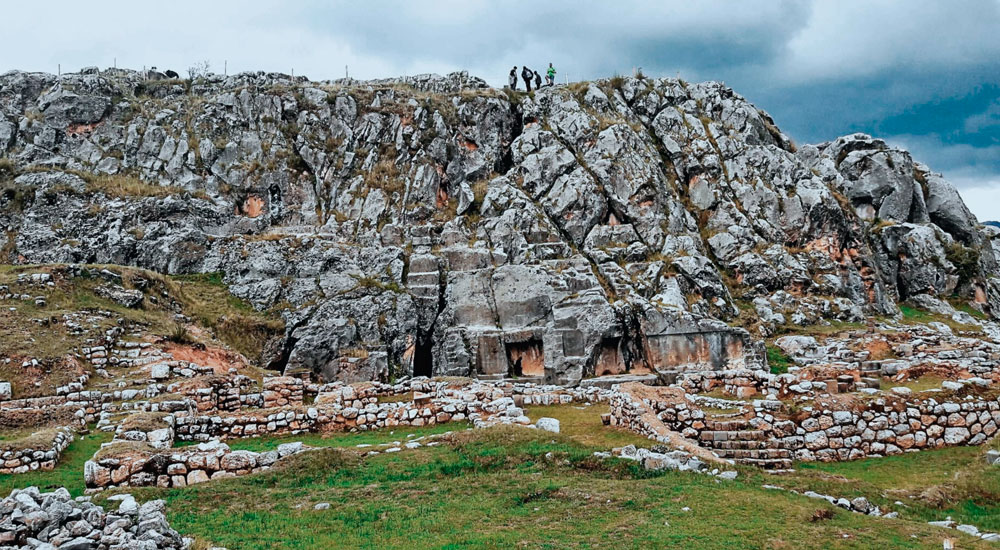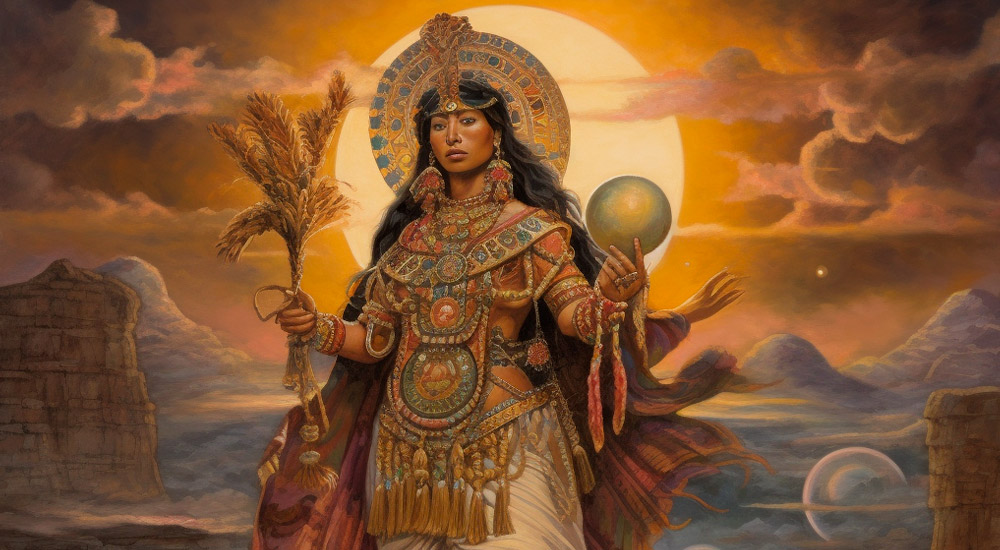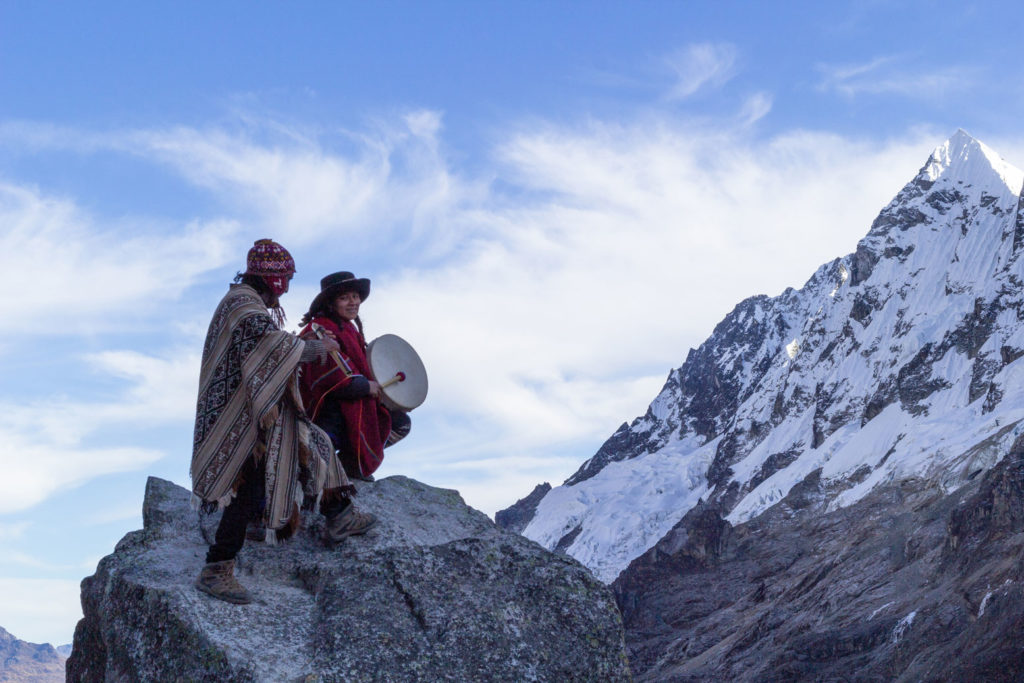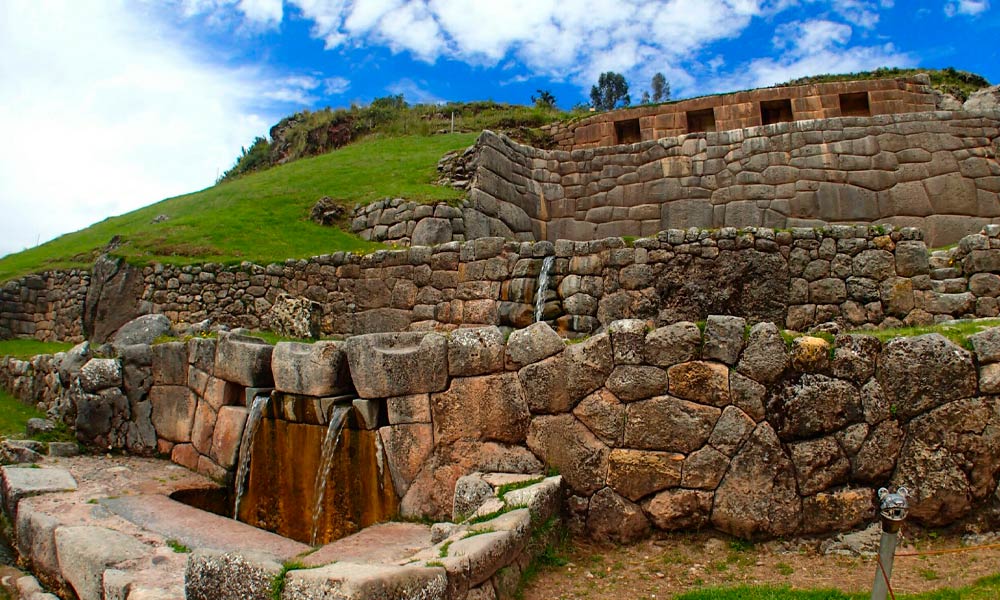Nestled amidst the rugged terrain near Cusco, the Temple of the Moon in Qhapaq Ñan, the extensive network of Inca roads that once connected the empire including the world wonder of Machu Picchu, this route is called the Inca Trail. This site is shrouded in an aura of mystique and spiritual significance, echoing the ancient Inca’s profound reverence for the cosmos and their enduring connection to the celestial realm. Today, the Temple of the Moon remains a sacred space where age-old ceremonies continue to be conducted, preserving the spiritual legacy of a bygone era.
As you venture into the depths of the Temple of the Moon, you step into a realm where the Inca civilization’s profound cosmic beliefs and rituals come to life. The site’s strategic placement within the landscape aligns with celestial events, emphasizing its importance as an astronomical observatory. Here, the Inca priests would have gazed at the heavens, meticulously tracking the movements of celestial bodies and deriving insights that guided their spiritual practices and agricultural endeavors.
Sacred Ceremonies and Rituals
The Temple of the Moon is not merely an archaeological site; it’s a living testament to the enduring spirituality of the region. Ceremonies that celebrate the cycles of nature, honor the Pachamama (Mother Earth), and pay homage to the divine cosmos are conducted here. The echoes of ancient chants and offerings to the spirits reverberate through time, inviting contemporary visitors to witness and partake in these sacred traditions.
A Pathway to the Inca World Wonder
For those who seek to explore the rich tapestry of Inca heritage, the journey to the Temple of the Moon can serve as a prelude to the awe-inspiring wonder that is Machu Picchu. Embarking on the two-day Inca trail to Machu Picchu, you’ll traverse a landscape adorned with various temples and sacred sites, each bearing witness to the spiritual depth of this ancient civilization. This path, trodden by countless pilgrims and travelers over the centuries, leads you to the crown jewel of Inca engineering and spirituality – Machu Picchu.
A Journey Through Time and Spirituality
The Temple of the Moon and the Inca trail represent more than just archaeological remnants; they are gateways to a world where history and spirituality intertwine. As you explore these sacred spaces, you’ll find yourself not only stepping into the footsteps of the Inca but also embarking on a journey of self-discovery and profound connection to the spiritual essence of the Andes. These sites beckon you to delve deeper into the mysteries of the past, seeking not only knowledge but also a profound connection to the cosmos and the ancient civilizations that once thrived here.
The Temple of the Moon on the Qhapaq Ñan:

The Temple of the Moon, ensconced within the intricate web of the Qhapaq Ñan, stands as a sacred jewel amidst the soaring peaks of the Andean mountains. This ancient network of roads, spanning thousands of miles, was the lifeblood of the Inca Empire, connecting its disparate realms with physical and metaphysical threads.
The Cosmic Significance
For the Inca civilization, every step along the Qhapaq Ñan was a spiritual voyage. These roads were not just thoroughfares; they were conduits to the divine. The Temple of the Moon, strategically positioned along this celestial highway, embodied this cosmic connection.
As the Incas embarked on their journeys, the Temple of the Moon marked a pause in the physical realm and a transition into the spiritual. Pilgrims and travelers, whether on quests of trade, diplomacy, or spiritual awakening, would reach this sacred site with reverence. It served as a threshold between the earthly and the ethereal, a place where the material world and the cosmos converged.
Navigating the Astral Realms
This enigmatic temple was more than mere stone and mortar; it was a portal to the heavens. The celestial bodies that graced the night sky held profound significance in Inca cosmology, guiding everything from agriculture to governance. Here, the movements of stars, planets, and constellations were observed with meticulous precision. The Temple of the Moon’s alignment with celestial events and its architectural symbolism rendered it an observatory where earthly affairs were harmonized with the rhythms of the cosmos.
Spiritual Pit Stops
Journeys along the Qhapaq Ñan were not just physical treks but spiritual odysseys. Pilgrims and travelers would pause at sacred sites like the Temple of the Moon to offer gratitude, seek blessings, or perform rituals in honor of Pachamama, the Earth Goddess. These spiritual interludes ensured that each step taken along the road was imbued with reverence and purpose.
A Continuum of Discovery
Today, the Temple of the Moon remains a bridge between epochs. It invites modern-day travelers to traverse its stone paths, just as the Inca did centuries ago. The Qhapaq Ñan, with its sacred nodes like this temple, beckons us to delve into the heart of a civilization that saw no separation between the terrestrial and the celestial.
Ancient Mysticism:
Nestled among the rugged Andean peaks, the Temple of the Moon stands as a testament to the Inca’s deep connection with the celestial realm. This sacred sanctuary, dedicated to Mama Quilla, the goddess of the moon, served as a celestial compass, guiding the Inca people through the darkest of nights.
Mama Quilla: The Moon Goddess
For the Incas, the moon was more than just a celestial body; it was a divine entity worthy of reverence. Mama Quilla, the goddess of the moon, was believed to control the lunar cycles, influencing crop fertility, and, by extension, the well-being of the Inca civilization. Her ethereal light provided a guiding beacon amidst the inky darkness of the Andean nights, ensuring that the Inca could navigate their physical and spiritual worlds.
Rituals and Ceremonies
Within the sacred confines of the Temple of the Moon, the Incas conducted elaborate rituals and ceremonies to pay homage to the stars and connect with the divine. These ceremonies were presided over by Inca priests known as Intihuatana, whose primary role was to maintain cosmic harmony between the sky and the earth.
The moon, in the Inca worldview, held a pivotal role in this cosmic dance. It influenced everything from agricultural cycles to religious ceremonies. During these rituals, offerings of food, drinks, and intricately woven textiles were presented to Mama Quilla as tokens of reverence and gratitude.
Cosmic Harmony
In the Inca cosmology, the celestial and the terrestrial were intrinsically linked. The Temple of the Moon was not just a place of worship; it was a bridge that connected the earthly realm with the cosmic domain. It facilitated a dialogue between the Inca people and the celestial bodies that presided over their lives.
Legacy in Stone
Today, as visitors explore the Temple of the Moon, they can still feel the resonance of these ancient ceremonies and the spiritual significance it held for the Inca civilization. The intricately carved stones and the celestial alignment of this site serve as a tangible reminder of the profound reverence the Incas had for the moon and the stars.
Standing amidst these timeless stones, one can’t help but be transported back in time, to an era when the moon was not just a distant orb in the night sky, but a revered deity whose light guided a civilization and whose presence still lingers in the stones of the Temple of the Moon.

Sacred Ceremonies to this Day:
As the sun sets behind the craggy peaks of the Andes, casting a deep, ethereal glow over the Temple of the Moon, the air becomes charged with a palpable sense of reverence. For the local communities living in the shadow of this sacred sanctuary, the traditions of their Inca ancestors continue to breathe life into this ancient site.
A Sacred Calendar
The Temple of the Moon is not merely a relic of a bygone era; it is a living testament to the enduring spiritual practices of the Andean people. Throughout the year, this sacred place plays host to a series of special ceremonies, each aligned with the cosmic rhythms of the universe.
Solstices and Equinoxes: Cosmic Alignments
During the solstices and equinoxes, when the cosmic energy is believed to be at its zenith, the Temple of the Moon becomes a focal point for spiritual gatherings. Visitors and local communities alike converge upon this site to pay homage to Pachamama, the revered Mother Earth.
Harmony and Prosperity
These ceremonies are not mere rituals; they are profound expressions of gratitude, respect, and hope. Participants gather to seek protection for their families, prosperity for their crops, and harmony in their lives. In the rhythmic beating of drums and the melodious chants, they find a connection not only to each other but also to the ancient wisdom passed down through generations.
Pachamama: The Divine Earth Mother
At the heart of these rituals is Pachamama, the Earth Mother who provides for her children. Offerings of coca leaves, grains, and other gifts are made to honor her benevolence and seek her continued blessings. These ceremonies are a poignant reminder of the deep bond between the Andean people and the land that sustains them.
A Continuation of Inca Traditions
In essence, the Temple of the Moon serves as a bridge between the past and the present, a place where the spiritual practices of the Incas persist through time. The stones, imbued with centuries of prayers and reverence, witness the unbroken thread of tradition carried by the descendants of the Inca.
An Invitation to Witness
Visitors fortunate enough to witness these ceremonies are offered a rare glimpse into a world where the ancient and the contemporary coexist. In the Temple of the Moon, under the star-studded Andean sky, they can feel the heartbeat of a culture that continues to find solace, inspiration, and connection in the timeless rituals of their ancestors.

The Temple of the Moon is a tangible remnant of the mystical Inca civilization and its connection to the divine. In this sacred enclave along the Qhapaq Ñan, ancestral energy endures, continuing to inspire ceremonies and adorations that transcend time. Immerse yourself in the magic of the Temple of the Moon and connect with the spirituality that permeated this corner of the Andes, where past and present converge in an eternal embrace.









